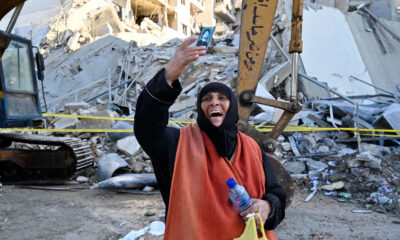International
Gaza school strike which killed 22 targeted one Hamas figure, BBC told
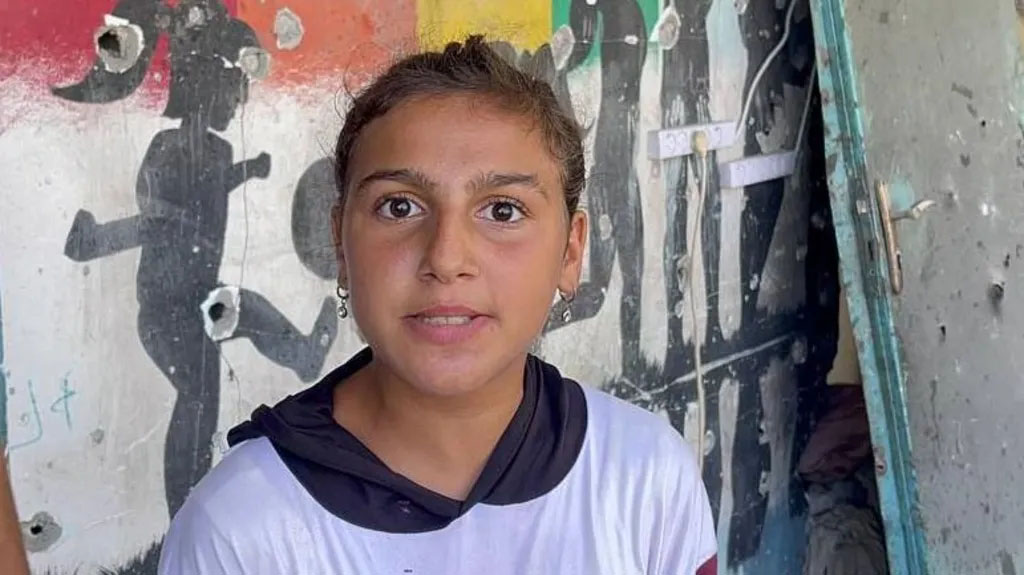
Gaza school strike which killed 22 targeted one Hamas figure, BBC told
Warning: This story contains details which some people may find upsetting
An Israeli air strike that killed multiple children at a former school twelve days ago had been targeting one local Hamas figure, the BBC has been told.
The Israel Defense Forces (IDF) said a Hamas “command and control centre” had been embedded inside the compound in Gaza City, which it targeted in a “precise strike” on 21 September.
It killed 22 people, including 13 children and six women, according to the Hamas-run health ministry.
The school, closed during the war, had been housing displaced people, the health ministry said.
One young girl, Amal, told the BBC she had been inside the school building when it was hit and saw bodies “torn apart”.
“What have we done as children? We wake up and go to sleep terrified,” she said.
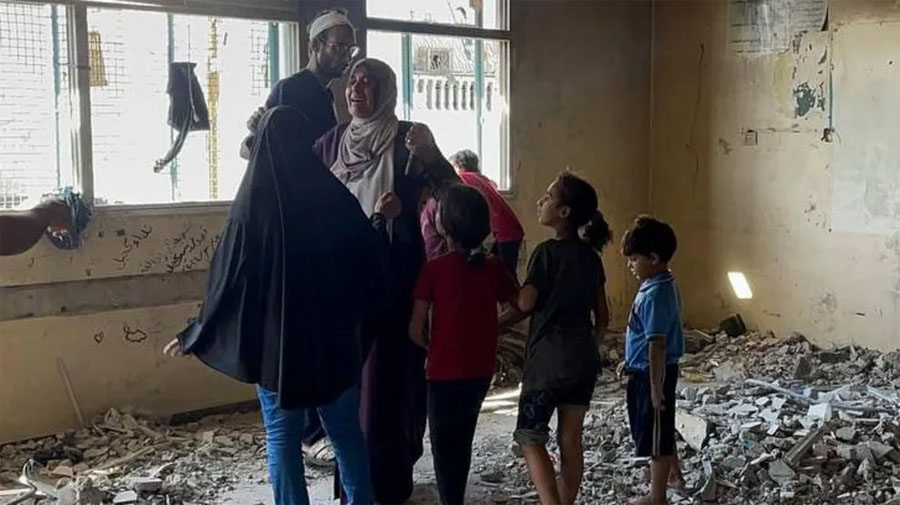
Huda lost two of her children in the Israeli air strike on 21 September
“At least protect the schools; we don’t have schools or homes – where do we go?”
Sources have told the BBC that one of those killed was a local Hamas figure, meaning many civilians died due to a single main target.
Huda Alhadad lost two children – son Muhammad, 13, and daughter Hanan, 12.
“I was coming from the hallway when the missile fell. I came and found my husband screaming, saying, ‘My children, my children, my children,'” she told the BBC.
READ ALSO:
- Lookman scores as Atalanta seal UCL victory over Shakhtar
- Couple abducted in gunmen attack on Edo
- 71-year-old Ekiti man bags life imprisonment for defiling girl, 10
“I asked him, ‘Where are they?’ I searched for them and found them under the rubble.”
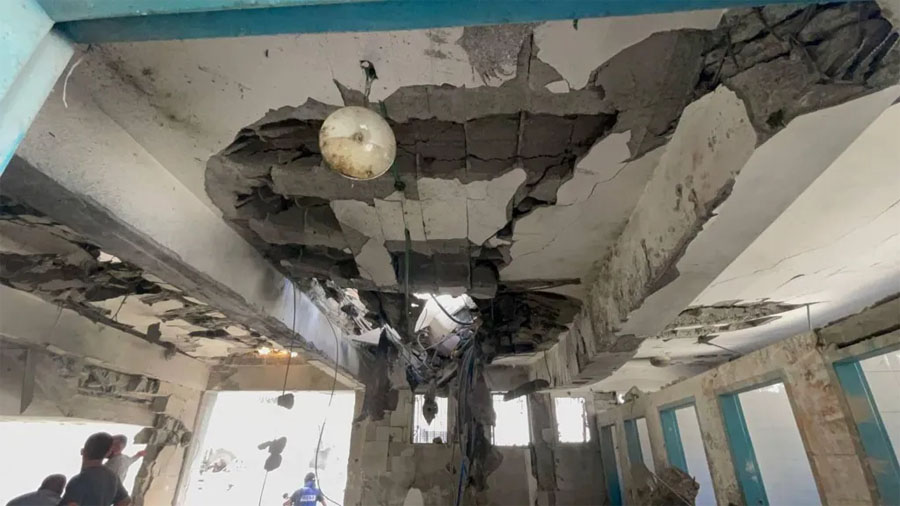
Damage to the roof of the former school building in Gaza City
In the twelve days after the air strike, at least eight more fatal strikes took place in Gaza on school buildings housing displaced families – the latest in a series of attacks on such buildings, which provide little safety.
Unicef has said more than 50% of schools used as shelters in Gaza had been directly hit during the current war, with “devastating consequences for children and families”.
In each of the latest strikes, the IDF released public statements saying the former schools had contained Hamas terrorists or “command and control” centres.
In their public statement about the 21 September strike, the IDF incorrectly named the former school they hit – Al-Zeitoun C – instead identifying another one nearby, Al-Falah.
We confirmed that Al-Zeitoun C was the one that had been hit by speaking to local people, as well as comparing videos of the attack aftermath with satellite imagery.
The Hamas-run Gazan authorities also named it as Al-Zeitoun C.
The relevant area is in the Al-Zeitoun neighbourhood and includes four distinct schools: Al-Falah, and Al-Zeitoun A, B, and C.
When asked about incorrectly naming the school, the IDF refused to comment.
It would also not comment on who was targeted.
The Hamas-run government media office said the Israeli military had committed a “horrific massacre” by bombing Al-Zeitoun C school, which shelters displaced people. It said that, in addition to those killed, the attack also caused severe injuries, including nine children who needed limbs amputating.
Dr Amjad Eliwa, an emergency physician who treated those injured in the strike, described over 30 injuries reaching his hospital, saying they were “mostly among children and women, with cases of amputations and very severe injuries”.
He described one of those who died as a woman who was six months pregnant.
This was corroborated by images of a foetus at the site of the strike, and residents said the dead woman was Barah Deraawi, who died along with two young daughters, Israa and Iman.
Gaza school strike which killed 22 targeted one Hamas figure, BBC told
BBC
International
Israeli strikes pound central Beirut, suburbs

Israeli strikes pound central Beirut, suburbs
BEIRUT: Israeli strikes pounded a densely-populated part of the Lebanese capital and its southern suburbs on Tuesday, hours ahead of an anticipated announcement of a ceasefire ending hostilities between Israel and Lebanese armed group Hezbollah.
A strike on Beirut hit the Noueiri district with no evacuation warning and killed at least one person, Lebanon’s health ministry said in a preliminary toll.
READ ALSO:
- French football star, Paul Pogba’s blackmail trial begin in Paris
- French football star, Paul Pogba’s blackmail trial begin in Paris
- Vigilante arrested in Anambra for robbery
Minutes later, at least 10 Israeli strikes hit Beirut’s southern suburbs. They began approximately 30 minutes after the Israeli military issued evacuation orders for 20 locations in the area, the largest such warning yet.
As the strikes were under way, Israel’s military spokesperson Avichay Adraee said the air force was conducting a “widespread attack” on Hezbollah targets across the city.
Israeli strikes pound central Beirut, suburbs
ARAB NEWS
International
Over $100m wasted, Trump mocks Democrats for targeting him

Over $100m wasted, Trump mocks Democrats for targeting him
Former U.S. President Donald Trump has fiercely criticised the legal cases brought against him, calling them “empty and lawless”.
He accused Democrats of weaponising the judicial system to target him as a political opponent.
In a strongly worded statement, Trump alleged that over $100 million in taxpayer money had been wasted in what he described as a politically driven effort to undermine his influence.
“Nothing like this has ever happened in our Country before,” he said, pointing to high-profile prosecutors, including Georgia’s Fani Willis and New York Attorney General Letitia James, as key figures in what he called a “political hijacking.”
READ ALSO:
- PH refinery: 200 trucks will load petroleum products daily, says Presidency
- US-based Nigerians get 30-year sentence over $3.5m romance scam
- 4 Nigerians arrested in Libya for alleged drug trafficking, infection charges
Trump also accused Willis of colluding with Nathan Wade, whom he described as “her lover” and lacking the experience to handle such cases.
He claimed Wade was paid “millions,” allegedly enabling lavish trips and cruises.
Letitia James, who is pursuing a civil fraud case against Trump, was also criticised.
He claimed she had campaigned on a promise to “get Trump” in her bid for office, an action he labelled “unethical” and “probably illegal.”
Trump also mentioned Manhattan District Attorney Alvin Bragg, alleging that Bragg initially resisted prosecuting him but was pressured into action by the Justice Department and the Democratic Party.
Describing the series of legal actions as a “low point in the history of our Country,” Trump maintained his resolve, declaring: “I persevered, against all odds, and WON.”
Over $100m wasted, Trump mocks Democrats for targeting him
International
US-based Nigerians get 30-year sentence over $3.5m romance scam
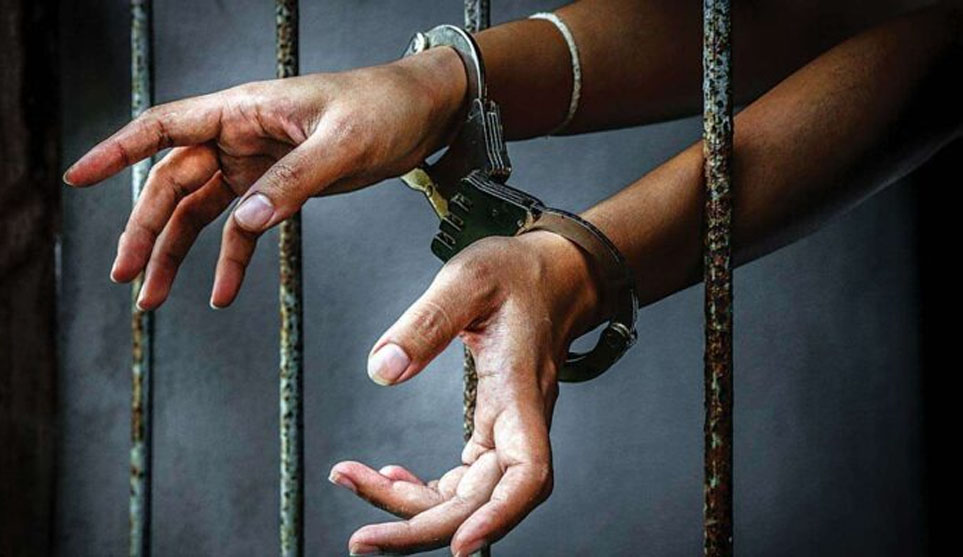
US-based Nigerians get 30-year sentence over $3.5m romance scam
A United States federal jury sentenced two Nigerians, Anthony Ibekie and Samuel Aniukwu, to 30 years in prison for scamming certain US citizens $3,500,000.
This was mentioned in a news statement made public on the US Department of Justice website on Monday.
According to the statement, the Nigerians, Ibekie and Aniukwu mislead their victims by informing them that they had received big inheritances that required payment to claim.
The couple would then ask their victims to transfer money, promising to refund them after the inheritances were claimed.
It also stated that the duo carried out romance scams by establishing romantic relationships with their victims and demanding them to send money after they had built trust in their victims.
It read, “An undercover law enforcement investigation has resulted in federal prison sentences for two Nigerian nationals residing in the Chicago suburbs who conducted online inheritance scams and other fraud schemes.
“Using aliases, Anthony Emeka Ibekie and Samuel Aniukwu communicated with victims throughout the United States, convincing them they had received substantial inheritances and needed to send money to individuals associated with the defendants in order to claim it.
“In addition to the inheritance scam, the pair carried out an online romance scam that involved communicating with victims via social media and dating websites, building trust with the victims through a purported online romance, and convincing them to send money to a predetermined recipient. Aniukwu and Ibekie also orchestrated a ‘business email compromise’ scam that targeted corporate email accounts.
READ ALSO:
- 4 Nigerians arrested in Libya for alleged drug trafficking, infection charges
- BREAKING: Port Harcourt refinery begins operation
- Damagun writes INEC to conduct by-election for 27 vacant Rivers assembly seats
“The fraud schemes were uncovered by a covert law enforcement investigation. The scams resulted in losses to victims of at least $3.5 million.”
According to the statement, after being arraigned on 14 charges, the duo pleaded guilty to their different alterations.
Following their guilty pleas, Ibekie was sentenced to 20 years in prison on Thursday, and Aniukwu was sentenced to 10 years in prison on November 8.
The statement continued, “A federal jury earlier this year convicted Ibekie, 59, of Oswego, Illinois, on all 14 counts of wire fraud, mail fraud, money laundering, making false statements to a bank, and passport fraud. U.S. District Judge Steven C. Seeger on Thursday sentenced Ibekie to 20 years in federal prison.
“Aniukwu, 50, of Romeoville, Illinois, pleaded guilty last year to wire fraud and money laundering charges. Judge Seeger on Nov. 8, 2024, sentenced Aniukwu to 10 years in prison.”
Meanwhile, Jennifer Gosha, an accomplice of the Nigerians and a US citizen, is expected to be sentenced on December 18 after pleading guilty.
“A third defendant, Jennifer Gosha, 52, a U.S. citizen from Oak Park, Ill., pleaded guilty earlier this year to charges of wire fraud and making false statements to a federal agent. Gosha is scheduled to be sentenced by Judge Seeger on December 18, 2024,” the statement concluded.
US-based Nigerians get 30-year sentence over $3.5m romance scam
-
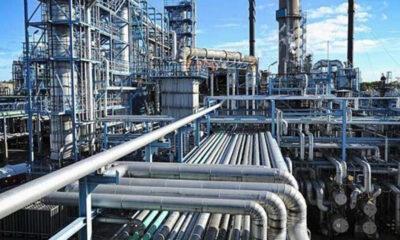
 metro15 hours ago
metro15 hours agoBREAKING: Port Harcourt refinery begins operation
-

 Business2 days ago
Business2 days agoJust in: Dangote refinery reduces petrol price for marketers
-
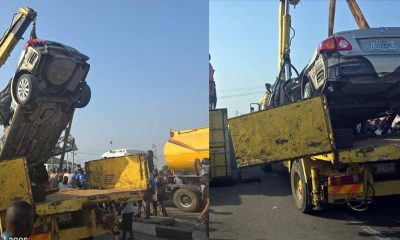
 metro1 day ago
metro1 day ago40-foot container falls on car in Lagos
-

 Politics3 days ago
Politics3 days ago2027: Lagos Speaker, Obasa joins gov race, may battle Seyi Tinubu, others
-

 Politics1 day ago
Politics1 day agoLagos 2027: Seyi Tinubu campaign team releases his life documentary
-

 International1 day ago
International1 day agoTrump to sack 15,000 transgender officers from U.S. military: Report
-

 Entertainment1 day ago
Entertainment1 day agoPolygamy best form of marriage for Africa – Okey Bakassi
-

 metro1 day ago
metro1 day agoPolicewoman dismissed in Edo threatens to kill children, commit suicide



